Spanish Enclaves in Morocco: Ceuta, Melilla, and the Migration Dilemma
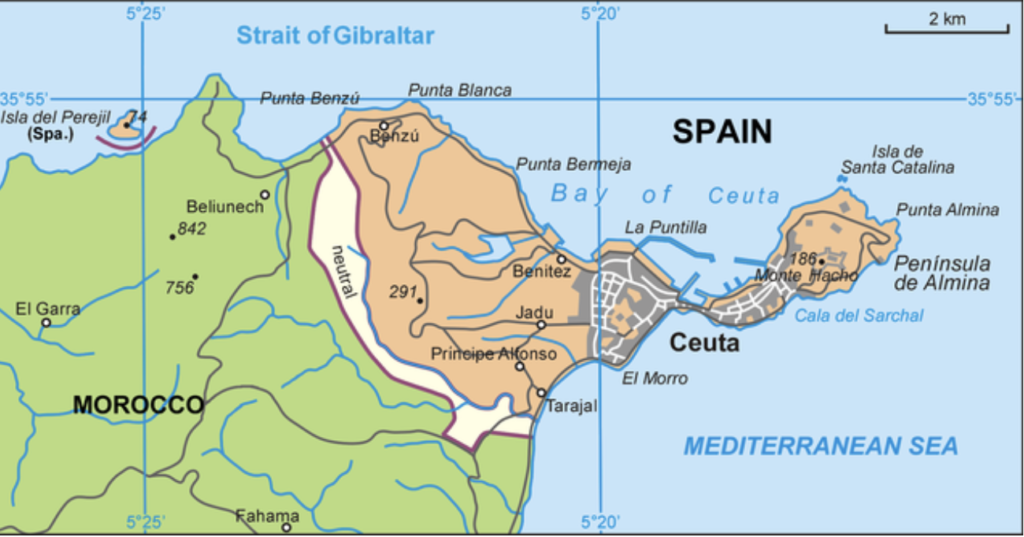
By: Mehdi El Merini / Arab America Contributing Writer
Historical Origins of Ceuta and Melilla
Ceuta and Melilla, two small enclaves on the northern coast of Africa, stand as remnants of Spain’s colonial presence on the African continent. Their histories date back centuries, intertwining the complex legacies of conquest, trade, and European imperial ambitions.
Ceuta is the older of the two enclaves, its roots stretching back to ancient times. Originally a Berber settlement, it passed through the hands of the Phoenicians, Romans, Vandals, and Byzantines before the Umayyads of the Islamic Caliphate captured it in the 8th century. Ceuta became an important outpost for the Moors during their conquest of the Iberian Peninsula. However, in 1415, the Portuguese seized the city from its Muslim rulers. Ceuta remained under Portuguese control until the Iberian Union (1580-1640) when it passed into Spanish hands following the union’s dissolution.
Melilla followed a different trajectory. Situated east of Ceuta, Melilla was captured by Spain in 1497, shortly after the Christian Reconquista of Iberia. The strategic importance of Melilla lay in its position as a coastal fortress, and its proximity to valuable trade routes. However, both enclaves would remain relatively isolated, caught between European and North African powers, while Spain’s grip on the broader Maghreb waned.
For centuries, Ceuta and Melilla were viewed as outposts of a crumbling empire, with their importance often fluctuating with Spain’s political fortunes. They were more military bastions than economic hubs, as Spain struggled to retain its foothold in North Africa amidst competition from other European powers and ongoing resistance from Moroccan forces.
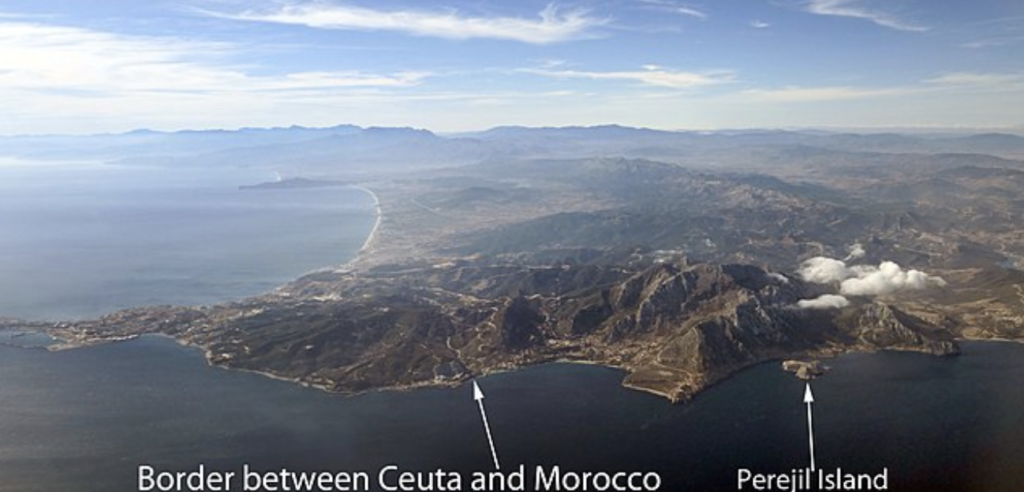
Post-Colonial Era and Moroccan Sovereignty Claims
The 20th century ushered in dramatic changes for the broader region, and Ceuta and Melilla were no exception. As decolonization movements swept across Africa, Morocco, newly independent in 1956, quickly laid claim to both cities, viewing them as integral parts of its territorial sovereignty. For Morocco, Ceuta and Melilla are akin to colonial vestiges that ought to be reintegrated into the kingdom, much like Gibraltar is for Spain in its own dispute with the United Kingdom.
Spain, however, has steadfastly maintained that Ceuta and Melilla are integral parts of its national territory. Both enclaves were officially declared autonomous cities in 1995, further cementing their political and administrative ties to Madrid. Spain’s argument is based on a legal framework that sees Ceuta and Melilla as long-established Spanish municipalities, predating the modern Moroccan state.
This ongoing territorial dispute remains a thorn in Moroccan-Spanish relations, though it is overshadowed by the more pressing concerns of migration and security in the Mediterranean region.
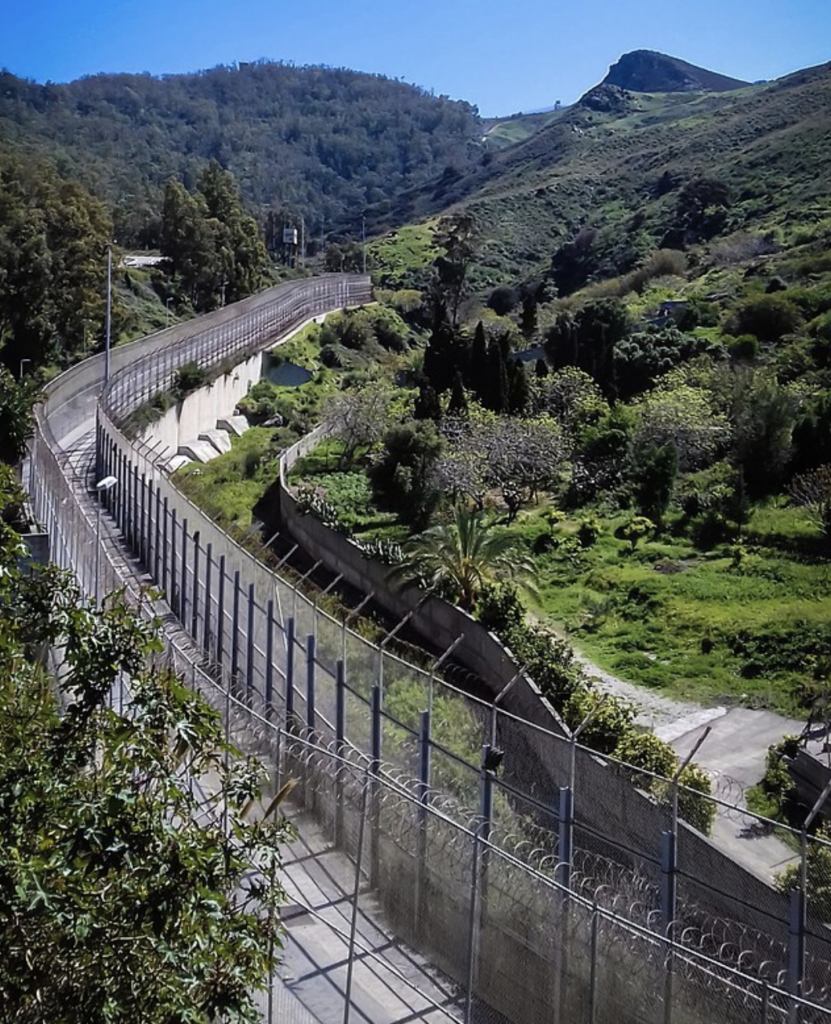
Ceuta and Melilla: The EU’s African Land Borders
Ceuta and Melilla hold a unique geopolitical status as the only two land borders between the European Union and Africa. This distinction places the cities at the heart of one of the world’s most pressing challenges: migration.
With Europe experiencing increased migration from sub-Saharan Africa, the Maghreb, and even war-torn regions such as Syria, Ceuta and Melilla have become focal points for those seeking to enter Europe. Migrants from across Africa and the Middle East make perilous journeys, often crossing through the Sahara Desert, to reach the Spanish enclaves, where they believe they can claim asylum or use the cities as stepping stones to the European mainland.
Both enclaves are surrounded by fortified borders, marked by high fences, barbed wire, and extensive surveillance. These measures are designed to deter unauthorized crossings, but they have also turned Ceuta and Melilla into flashpoints for humanitarian crises. Migrants often attempt to scale the fences in large groups, hoping to overwhelm border security forces. These attempts have frequently ended in violence, with Spanish and Moroccan security forces clashing with migrants, leading to deaths, injuries, and human rights violations.
The European Union, in an effort to curb irregular migration, has provided significant financial and logistical support to Spain for border security in Ceuta and Melilla. However, critics argue that the heavy fortification of the enclaves has turned them into symbols of Europe’s “Fortress” mentality, where the emphasis on security often overshadows the humanitarian needs of migrants.
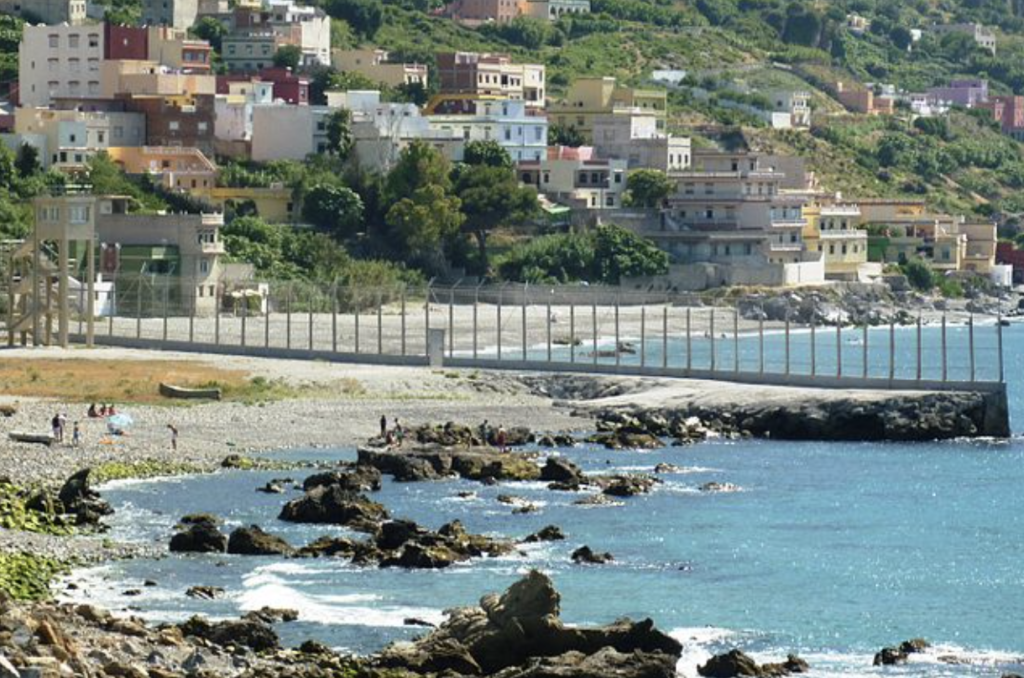
Migration Pressures and Humanitarian Concerns
The situation in Ceuta and Melilla is emblematic of broader EU migration challenges. In 2021, one of the most visible demonstrations of this crisis occurred when over 8,000 migrants, many of them Moroccan, surged into Ceuta over two days after Moroccan authorities appeared to loosen border controls in response to a diplomatic spat with Spain over the Western Sahara issue. The event was a stark reminder of the tenuous balance between migration policy, diplomacy, and human rights in the region.
Humanitarian organizations frequently raise concerns about the treatment of migrants in and around Ceuta and Melilla. The conditions in the temporary holding centers, known as CETIs (Centro de Estancia Temporal de Inmigrantes), have been criticized for overcrowding and inadequate facilities. Moreover, the process for determining asylum claims in the enclaves has been called into question, with some claiming that migrants are swiftly deported back to Morocco without due process.
Beyond the physical challenges of migration, Ceuta and Melilla have become symbols of the wider European debate over migration. On one hand, they represent the aspirations of thousands seeking better lives in Europe; on the other, they underscore the limits of Europe’s willingness to accommodate new arrivals, particularly from Africa and the Middle East.
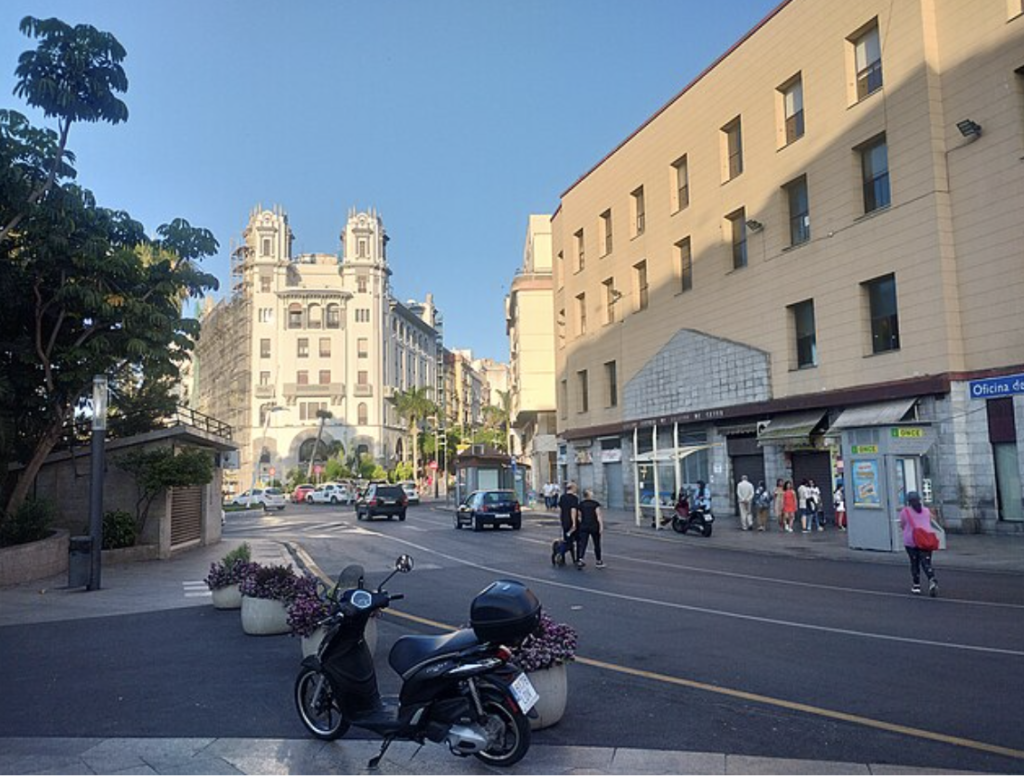
The Future of Ceuta and Melilla
The future of Ceuta and Melilla remains uncertain. The enclaves are unlikely to lose their strategic importance, particularly given their roles as EU borders. For Morocco, reclaiming the cities remains a long-term national goal, though the issue is often placed on the back burner to preserve broader bilateral cooperation with Spain on matters like trade, migration, and security.
Meanwhile, for Spain and the EU, Ceuta and Melilla are at the center of a complex web of security, migration, and foreign policy considerations. As migration pressures from Africa continue, the enclaves will likely remain on the front lines of one of the defining issues of the 21st century.
In the context of migration, Ceuta and Melilla symbolize both the hopes and the frustrations of a world where borders are increasingly contested, and the movement of people remains fraught with challenges. As long as these issues persist, the enclaves will continue to play a critical role in shaping the future of EU-Africa relations.
Check out our Blog here!








